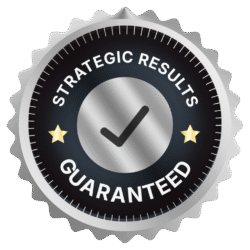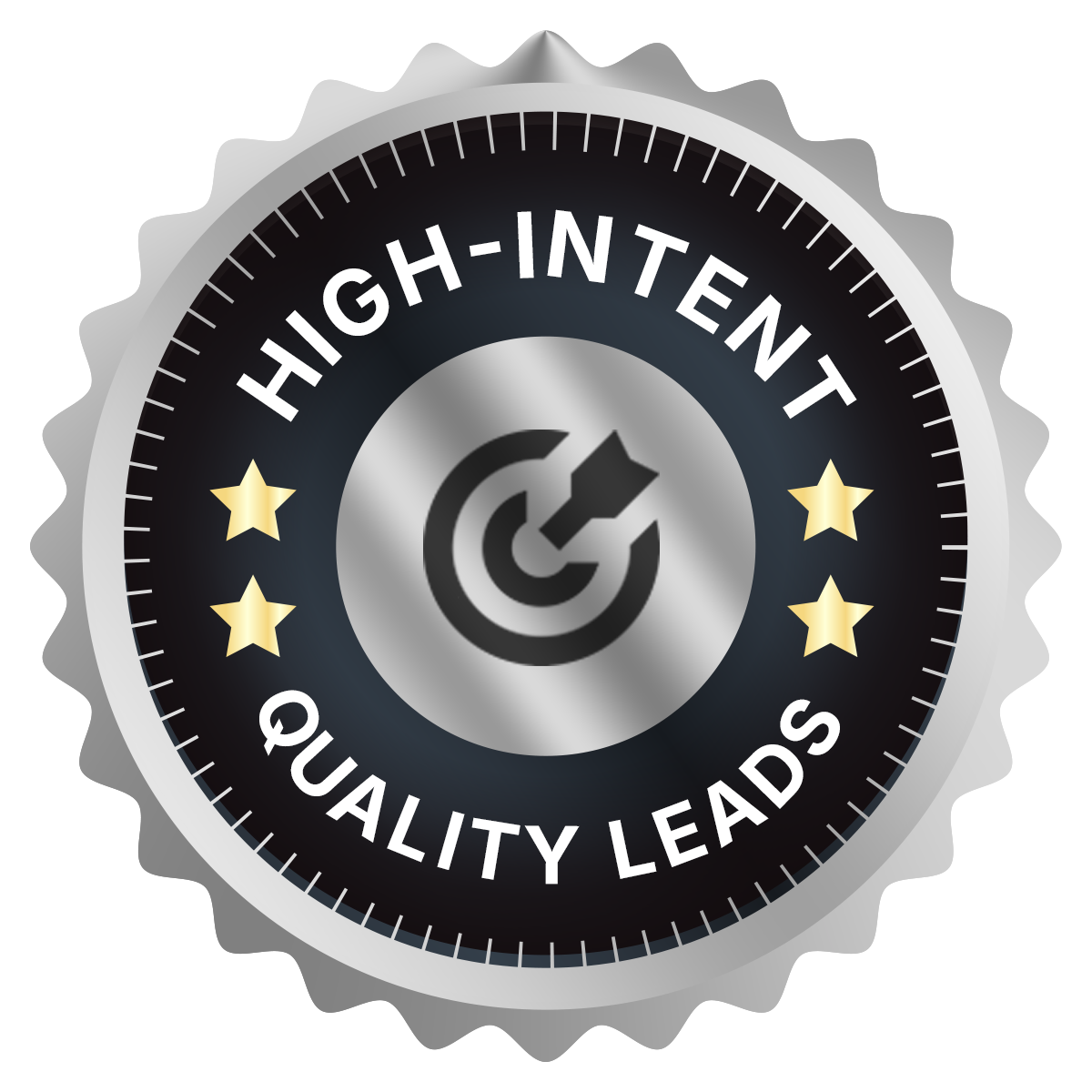Why Long-Term Strategy Works Differently Than Fast Campaigns
In the world of lead generation and marketing, there’s a stark contrast between quick-hit campaigns—intended to capture immediate attention and drive short-term results—and comprehensive, long-term strategies designed to build sustainable growth over months and years. While rapid campaigns can deliver a burst of leads in days or weeks, they often lack the depth and resilience of a well-constructed, long-term approach. In this post, we’ll explore why long-term strategy operates under different principles, how it compounds value over time, and when it’s essential to shift focus from “fast” wins to enduring success.
1. Foundation vs. Quick Wins: The Core Difference
Quick Campaigns (Fast Wins)
- Immediate Activation: Fast campaigns—such as flash sales, limited-time ads, or highly targeted promotional pushes—are optimized for speed. They use narrow targeting and high-intensity messaging to generate a rapid spike in inquiry volume.
- Tactical Focus: These campaigns often revolve around specific promotions or incentives, like discount codes, free trials, or event registrations. They grab attention quickly by appealing to urgency or exclusivity.
- Short Lifespan: Once the promotional window closes or the ad budget depletes, the spike in activity subsides. Without continual re-investment, lead volume drops back to baseline.
- Limited Brand Building: Because messaging centers on immediate calls-to-action (“Buy now,” “Act today,” “Only 3 spots left”), quick campaigns don’t necessarily cultivate deeper trust, loyalty, or long-term brand affinity.
Long-Term Strategy (Enduring Growth)
- Incremental Accumulation: Long-term strategies emphasize consistent, patient effort—publishing educational content, nurturing leads via sequenced emails, and building a reputation over time. These initiatives may generate modest immediate returns but accumulate substantial value across quarters.
- Strategic Focus: Rather than reactive promotions, long-term plans align with broader business objectives—expanding into new markets, establishing thought leadership, or developing recurring revenue streams. Each tactic serves a cohesive vision.
- Sustained Impact: Tactics like SEO optimization, community engagement, and premium content creation can attract steady organic traffic and inbound leads over months and beyond, reducing reliance on recurring ad spend.
- Robust Brand Equity: By consistently delivering value—whether through blog posts, case studies, or personalized outreach—long-term strategies deepen customer relationships. Prospects become advocates, referrals multiply, and brand trust grows exponentially.
The core difference is analogous to planting a sapling versus grabbing a fast paycheck: quick campaigns fill the pipeline temporarily, but long-term strategies build a forest of lasting opportunities.
2. The Compounding Nature of Long-Term Efforts
Long-term marketing pivots on compounding returns: small, deliberate actions that accumulate significant benefits over time. Consider these mechanisms:
- Evergreen Content: When you publish high-quality articles or videos addressing common questions in your industry, they continue attracting organic traffic months or years later. Unlike a single ad that expires, these assets work 24/7—gradually enhancing brand visibility and credibility.
- SEO and Domain Authority: Consistent, value-driven content improves search engine rankings. As your domain authority climbs, each new piece of content benefits from increased visibility, creating a virtuous cycle where traffic and leads compound.
- Email Nurture Sequences: By segmenting leads based on behavior and delivering personalized messaging over time, you build trust and familiarity. Even if a prospect doesn’t convert immediately, they remain on your radar. When their need eventually aligns, you already have top-of-mind awareness.
- Social Proof Accumulation: Positive reviews, testimonials, and case studies accumulate over time. Prospects encountering a brand with a robust portfolio of success stories are more inclined to trust and convert. This aggregation of social proof is difficult to replicate with quick campaigns.
- Network Effects: Engaging in community forums, hosting webinars, or collaborating with industry influencers expands your audience. Each event may draw a modest crowd, but over time, these connections cross-pollinate, opening doors to collaboration opportunities and referral partnerships.
In contrast, fast campaigns may yield immediate leads, but they rarely generate ongoing momentum once the initial effort diminishes. Only through continuous, compounding tactics can you transform sporadic spikes into a steady stream of prospects.
3. Flexibility and Adaptation Over Time
Quick Campaigns
- Rigid Timeframes: Promotional periods and ad budgets are often inflexible. If external factors—like market fluctuations or emerging competitor campaigns—shift suddenly, there’s limited room to pivot without starting a new campaign entirely.
- Tactical Myopia: Because focus is on short-term ROI (e.g., “How many leads can I get in this week?”), there’s often less emphasis on broader market shifts or evolving customer needs. The result can be wasted spend if the underlying messaging or targeting no longer resonates.
Long-Term Strategy
- Iterative Optimization: With ongoing content calendars, quarterly growth reviews, and regular performance audits, long-term strategies remain adaptable. You can update messaging, explore new ad channels, or adjust targeting based on emerging trends.
- Data-Enriched Decision Making: Over time, you collect richer datasets—lifetime customer behavior, conversion patterns, and seasonal fluctuations—that inform smarter strategies. The insights gleaned from long-term metrics guide future campaigns more effectively than a short-term snapshot.
- Resilience to Market Shocks: When unexpected events—economic downturns, regulatory changes, or shifts in consumer sentiment—occur, a brand with deep-rooted relationships and diverse marketing channels weathers the storm better. Quick campaigns may falter when budgets tighten, but long-term efforts anchored in community and trust continue to drive engagement.
Flexibility and adaptability are critical traits for sustainable growth. While fast campaigns can be paused or relaunched, they lack the nuanced understanding that informs strategic pivots, which only time and consistent effort can provide.
4. Balancing Immediate Needs with Long-Term Vision
Most businesses require a blend of both approaches. Here’s how to leverage each effectively:
- Short-Term Tactics: Use fast campaigns to capitalize on specific events—seasonal peaks, product launches, or limited-time incentives. Structure these campaigns to target high-intent audiences, ensuring that immediate budgets prioritize prospects most likely to convert.
- Parallel Long-Term Initiatives: While short-term campaigns run, invest consistently in long-term activities—publishing thought leadership content, nurturing email sequences, and cultivating partnerships. Allocate a portion of your budget and resources to these efforts, recognizing their delayed but lasting returns.
- Aligned Planning: Ensure that your immediate and long-term strategies reinforce rather than compete with each other. For example, utilize insights from quick campaign performance to inform content topics—if a flash sale highlights a common customer objection, develop a detailed blog post addressing that concern for future evergreen traffic.
- ROI Measurement: Track distinct KPIs for each approach: cost-per-lead and conversion rates for fast campaigns, and metrics like organic traffic growth, lead magnet downloads, and subscriber retention for long-term efforts. Monitoring these separately helps you evaluate true performance and allocate budgets effectively.
By balancing the urgency of quick wins with the endurance of a long-term vision, you ensure both immediate cash flow and future stability.
5. Cultivating Brand Equity vs. Transactional Focus
Transactional Mindset (Fast Campaigns)
- Feature-Driven Messaging: Tactics often highlight features or discounts—“50% Off,” “Limited-Time Offer,” or “Free Consultation for First 20 Customers.” While effective for short bursts, this transactional focus can erode brand value if overused.
- Disposable Engagement: Prospects drawn solely by price may have low loyalty. Once a competitor offers a slightly better deal, they switch. This results in high churn and limited repeat business.
Brand Equity Mindset (Long-Term Strategy)
- Story-Driven Messaging: Long-term efforts weave in authentic brand narratives—values, mission, and unique differentiators. Prospects connect on an emotional level, seeing the brand as a partner rather than just a vendor.
- Relationship Building: By consistently providing value—educational content, community engagement, and personalized interactions—you cultivate loyal customers. They remain with the brand even when competitors run short-term promotions because they trust and relate to your overarching mission and values.
Investing in brand equity through long-term initiatives ensures that each new campaign launches from a foundation of trust and recognition, making fast campaigns more efficient and effective when they run.
6. Resource Allocation for Sustainable Impact
Long-term strategy demands strategic resource allocation:
- Budget Distribution: Instead of pouring all funds into short-term ROI, allocate a portion—perhaps 20–30%—to nurturing brand and content initiatives. This balance prevents overdependence on paid channels and fosters organic growth.
- Talent Development: Build in-house expertise for content creation, data analysis, and community management. When quick campaigns are needed, the same team can pivot to tactical execution, but their deeper skillset ensures that both immediate and future efforts are top-notch.
- Technology Investments: Long-term success may involve investing in customer relationship management systems, marketing automation platforms, and analytics dashboards. While these tools require initial setup and training, they pay dividends by automating repetitive tasks and providing insights that compound over time.
Smart resource allocation ensures that long-term gems—like SEO, brand awareness, and customer loyalty—receive ongoing investment rather than being sidelined in favor of short-lived promotions.
Final Thoughts
Fast campaigns and long-term strategies are not mutually exclusive. Each has its place: fast campaigns for generating immediate lead volume and addressing urgent revenue needs; long-term strategies for building enduring brand equity, organic traffic, and customer loyalty. Understanding how these approaches differ—and how they can complement each other—empowers you to craft a marketing mix that delivers both immediate wins and sustained growth.
Ultimately, long-term strategy works differently by focusing on compounding returns, adaptive resilience, and emotional connection—elements that fast campaigns simply cannot replicate in isolation. Balance your efforts wisely, allocate resources strategically, and let quick campaigns capitalize on short-term opportunities while your long-term engine steadily propels you forward.









